Spring Gardening Checklist to Help the Summer Garden Thrive
Are you ready to return to the garden and get your hands dirty again? In this post, I’ll share the essential projects on your spring gardening checklist to work on now so your summer garden will thrive.
Hello Spring! It’s that magical time of year when the garden starts to wake up from its long winter nap. Whether it’s the new growth popping out of the ground, tree buds beginning to bloom, or the seeds starting to germinate, there is plenty to be happy about.
There’s something so fulfilling about slipping on a pair of gardening gloves and heading outdoors. And let’s be honest, is there anything more satisfying than the first sprout of green poking through the garden soil?
As we get excited about the return of vibrant colors and lush garden spaces, it’s important to remember that a little spring preparation goes a long way. So, let’s dust off those gardening tools, roll up our sleeves, and dive into the spring gardening checklist!
Updated: 3/22/2024
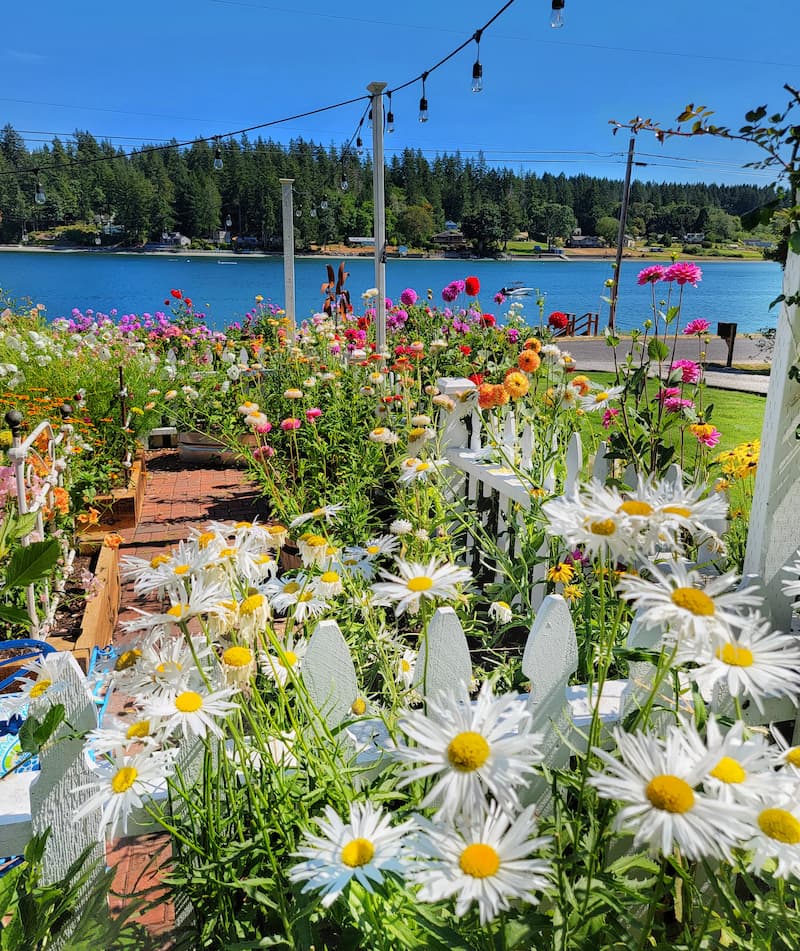
As an Amazon affiliate, I earn from qualifying purchases at no extra cost to you. My blog contains other affiliate links for your convenience as well. Click here to read my privacy policy.
Garden Supplies and Tools
Check out my favorite garden supplies and tools for the growing season. Whether you’re looking for potting soil or deer repellent, you’ll find what I use in my own garden.
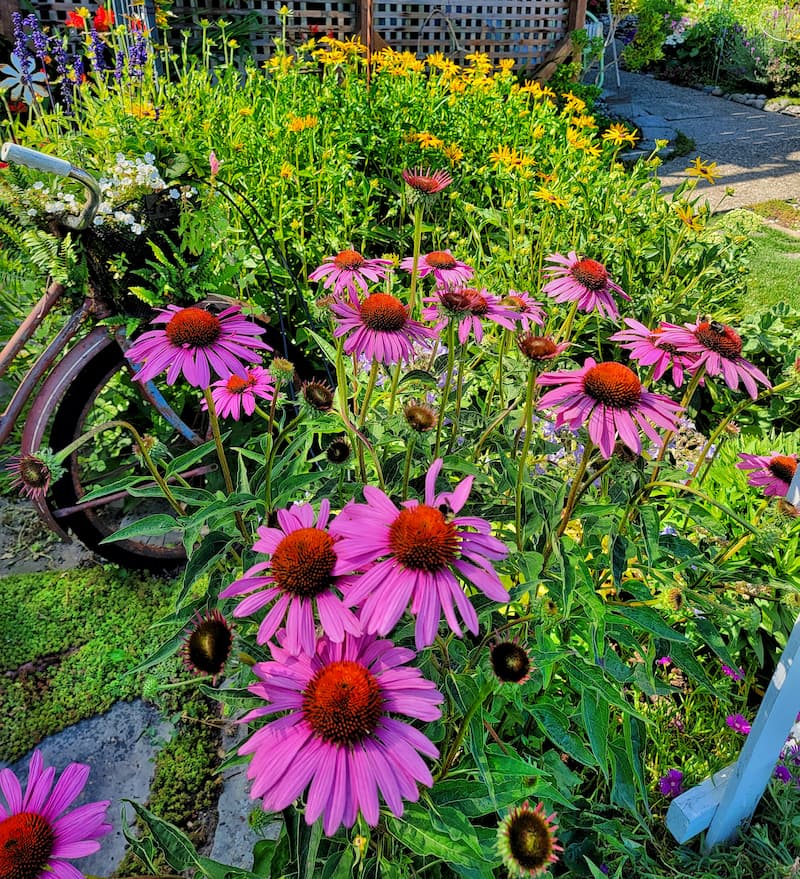
Why Are Spring Gardening Projects So Important?
Tackling these spring gardening tasks will lay the foundation for a garden that flourishes through the summer and beyond.
With mild temperatures and increased rainfall, spring offers the perfect conditions for planting, pruning, and preparing the soil. It’s the best time for seeds to germinate, roots to strengthen, and plants to establish themselves before the heat of summer sets in.
By cleaning, feeding, and organizing your garden now, you’re setting the stage for plants to withstand pests, diseases, and the summer heat. What you do in the spring initiates a chain reaction of growth, health, and blooming in the garden that lasts all season long.
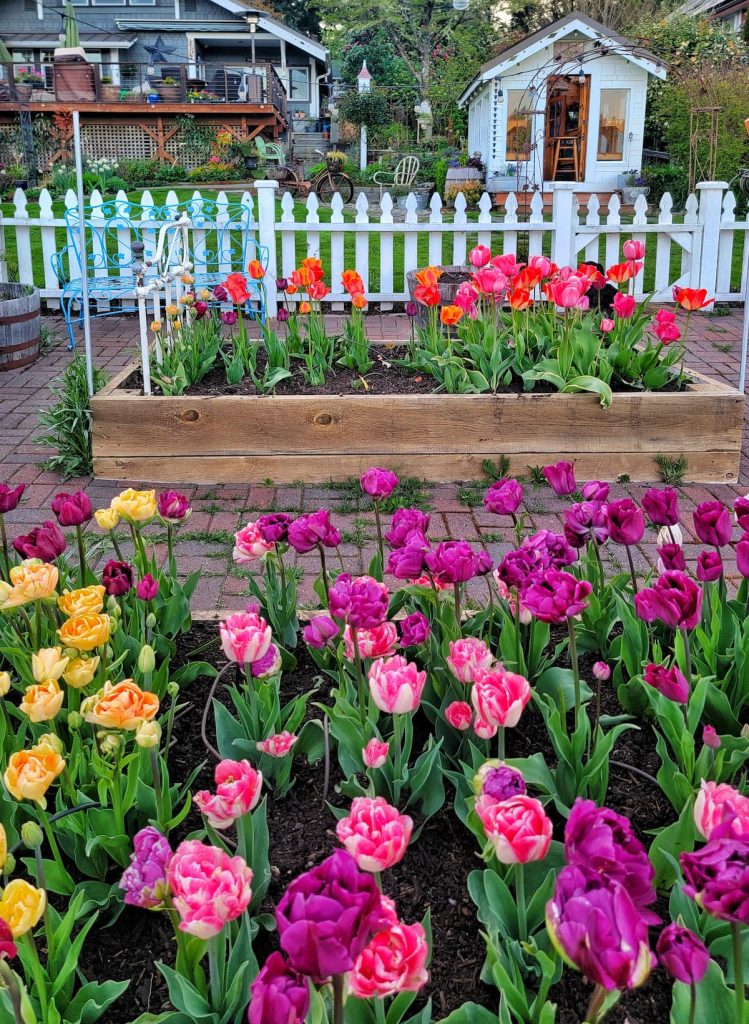
Spring Garden Projects
- Assess Your Garden
- Address Hardscape Issues in the Spring Garden
- Clean-Up Garden
- Prepare Garden Soil
- Mulch and Fertilize
- Control Weeds
- Divide and Transplant Perennials
- Transplant Evergreen Shrubs in Early Spring
- Split Dahlia Tubers
- Pruning and Shaping Plants and Trees
- Cut Back Evergreen Outdoor Ferns
- Trim Ornamental Grasses
- Pinch Back Annual Flowers
- Plan Your Garden Beds
- Spring Planting
- Start Seeds Indoors
- Companion Planting
- Pest and Disease Management
- Protect Your Garden from Deer
- Practice Slug Maintainance
- Harden Off Flowers Before Transplanting
- Support Your Flowers
- Garden Tool and System Maintenance
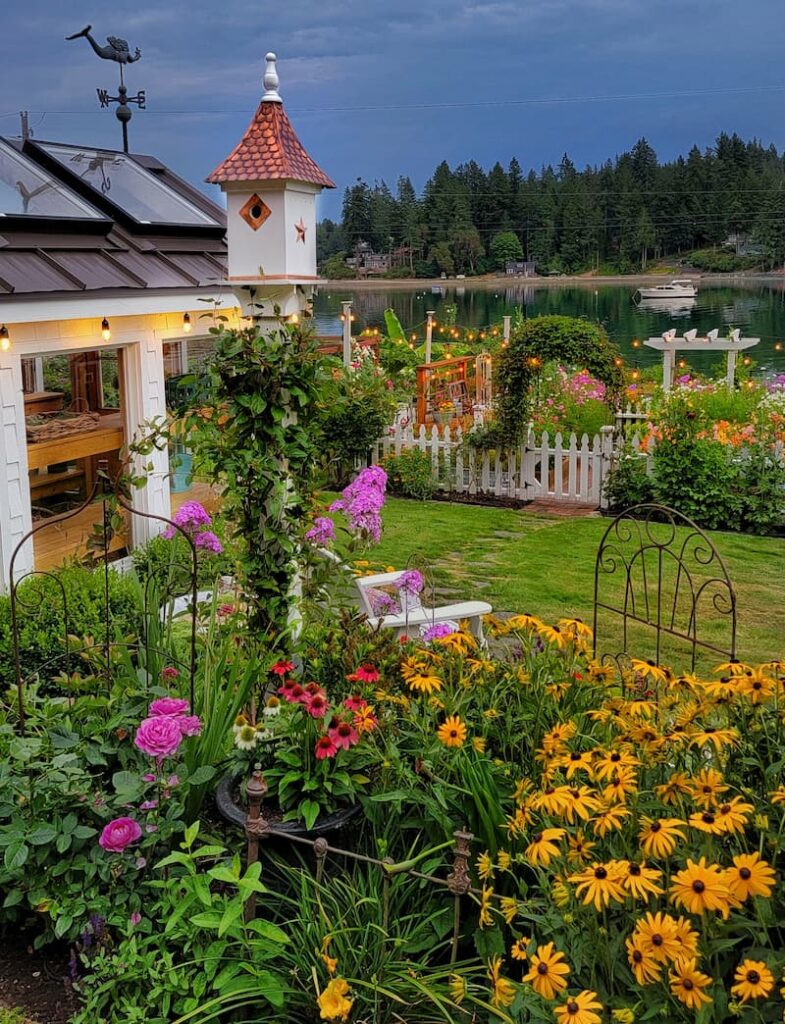
20 Spring Garden Projects to Make Your Garden Thrive
There’s plenty to do in the garden now that spring is here. Follow along as I share my spring gardening checklist with 20 projects to prepare your garden for summer beauty!
Assess Your Garden After a Long Winter
Before diving into the many projects on your spring gardening checklist, let’s stroll through your garden.
This is the right time to reconnect with each plant and garden space after the long winter months. Note which areas might need a little extra love, including hardscape elements. Observe the winter’s toll on your garden, identifying any damage to your plants or structures that needs attention.
It’s also the perfect opportunity to anticipate the season ahead. You’ll have a clearer idea of what tasks top your list, from clearing yard debris to planning new plant additions.
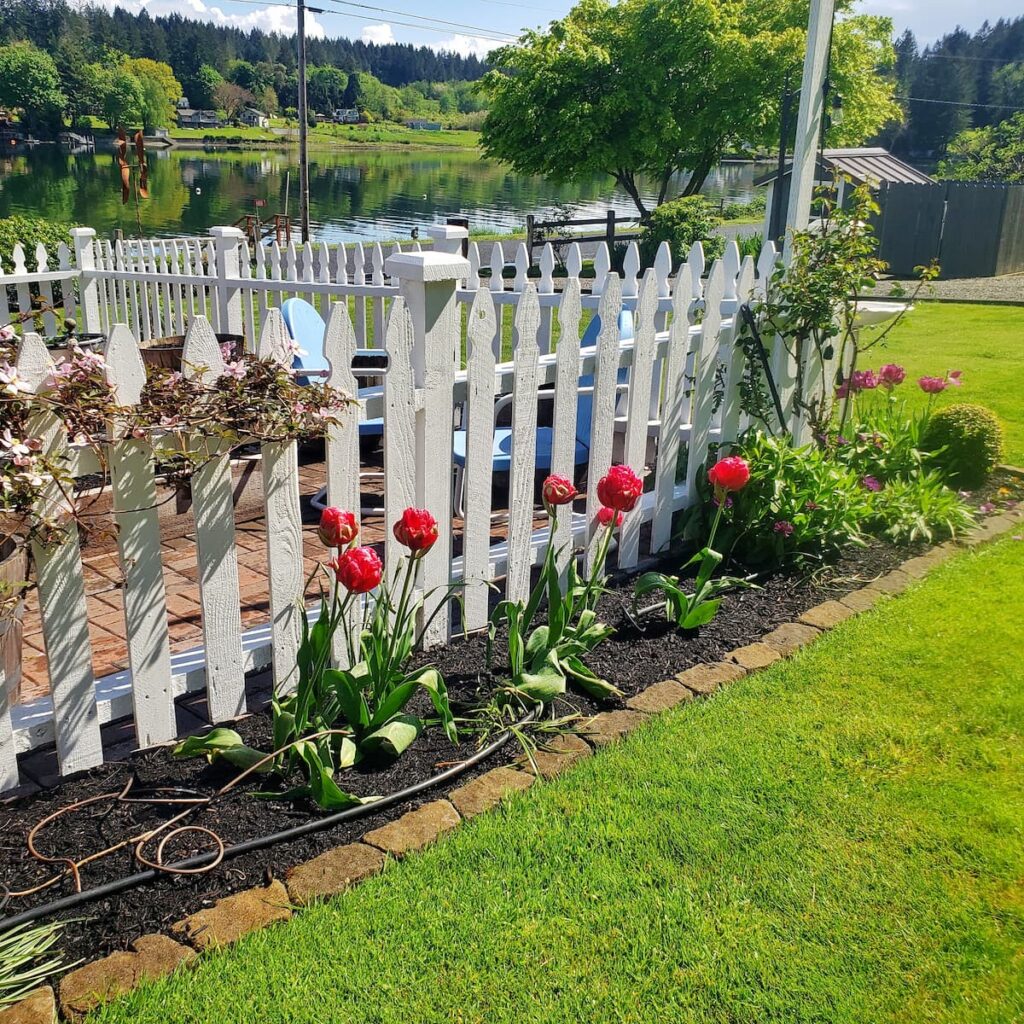
Address Hardscape Issues in the Spring Garden
Repair any damaged fences, decks, window boxes, trellises, arbors, and raised beds while the garden ground is still waiting to be worked on due to the cold temperatures. This is also a good time to build new fences and garden beds.
When temperatures get warmer, apply paint, stain, or sealant to any elements made of wood.
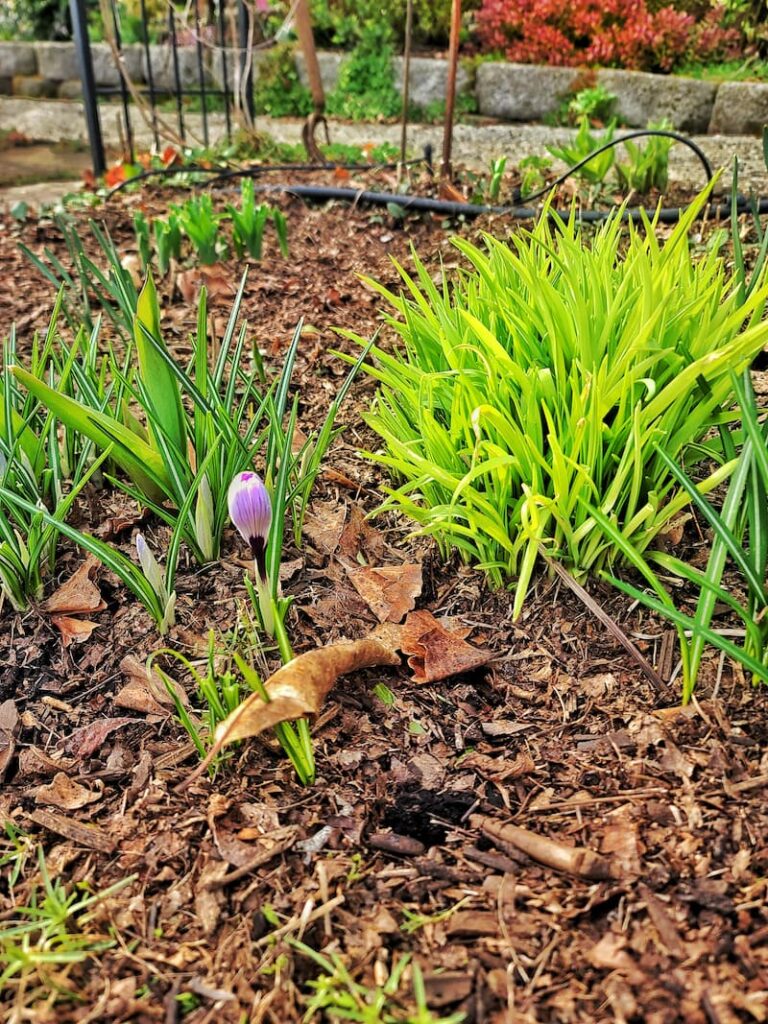
Preparing Your Garden for Spring
Garden Clean-Up
A significant task on my spring gardening checklist is cleaning your garden beds, patios, and decks.
Early spring is the perfect time to cut last year’s perennial foliage to the ground and remove dead leaves and any other debris that winter left behind.
Spring bulb flower stems can be cut back to the ground as soon as they have finished blooming. However, the bulbs need to keep their foliage to photosynthesize, so resist the urge to cut them until they are brown and easy to pull up in late spring or early summer.
Cleaning up your garden is not only about freshening up your outdoor space but also a crucial step to prevent pest and disease problems from getting out of control.
Scrub and sterilize your water features, bird baths, and containers before putting them back in the garden with 1 part bleach/5 parts water solution.
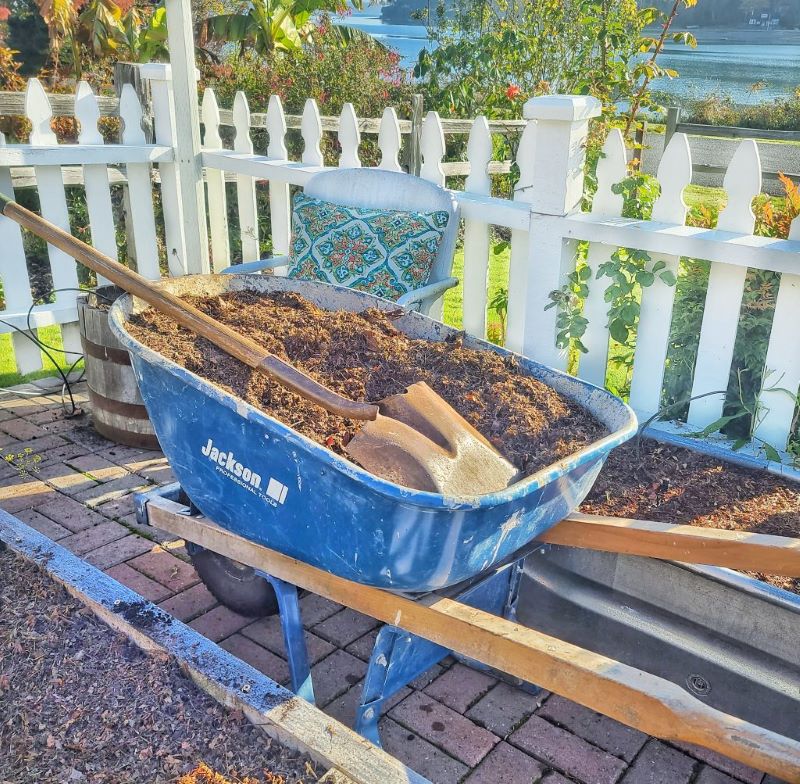
Prepare Your Garden Soil
The key to a productive garden starts before the first plant is planted. Having healthy, fertile soil is important when preparing your flower beds.
To prepare the soil for the gardening season, I always mix in plenty of organic matter to my planting beds by adding fish compost every April.
After the long, cold winter, your soil is hungry for attention. Enrich it with compost or well-rotted manure, introducing beneficial organisms and nutrients that plants need to flourish.
Earthworms and other garden creatures will work these organic materials into your soil.
Testing the soil’s pH can also reveal your soil’s condition to see what soil amendments are needed for your garden’s specific plants.
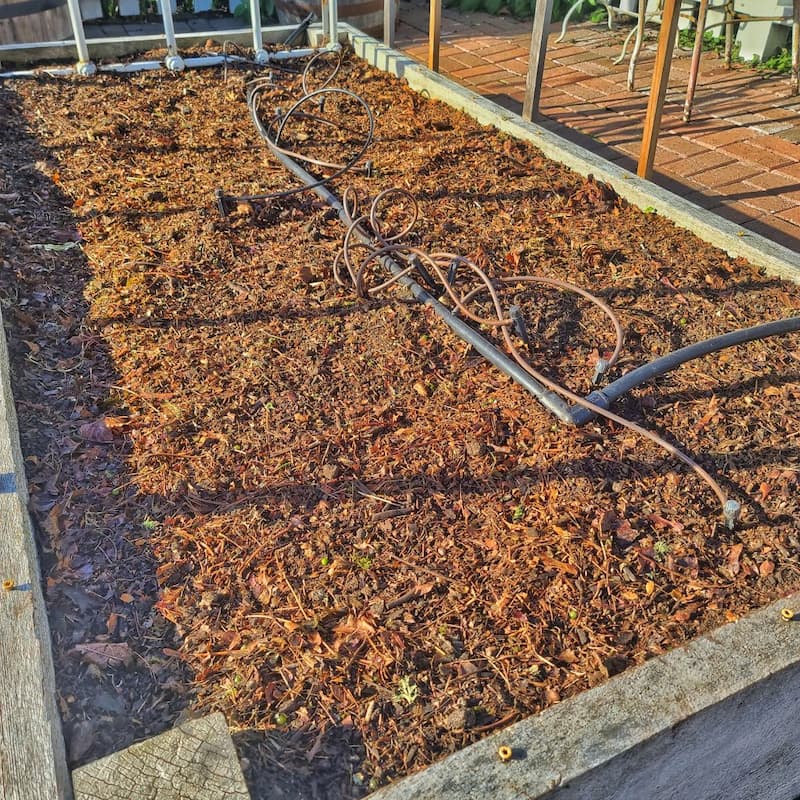
Here is a list of the benefits of compost for your garden soil.
COMPOST
Find out more about preparing garden beds for the growing season.
Mulching and Fertilizing
Mulch is like a cozy blanket for your garden, conserving moisture, regulating soil temperature, and warding off weeds that compete for space and nutrients.
Applying a layer of mulch around your plants can thrive with less watering and weeding required.
Organic fertilizers provide essential nutrients that help plants grow strong and healthy. Choosing the right fertilizer depends on the needs of your specific plants and the natural fertility of your soil.
The right balance will encourage lush foliage and vibrant blooms, like a slow-release plant food.
Mulching and fertilizing are about giving your plants the best possible care—protecting them from external stresses and nourishing them from the roots up.
MULCH

Control Weeds in the Garden
I don’t know about your garden this time of year, but the weeds are almost everywhere in my Pacific Northwest garden. It is important to get a handle on them now so they don’t compete with your other plants for vital nutrients.
Managing weeds in your garden can feel like a never-ending battle. But with the right approach, you can keep them under control before they flower and go to seed.
A fresh layer of mulch will also help suppress weeds by blocking sunlight and retaining soil moisture, which is beneficial for plants.
Pair mulching with regular weeding sessions, preferably after a rain when the soil is soft. This makes it easier to pull out the entire root system of the weeds.
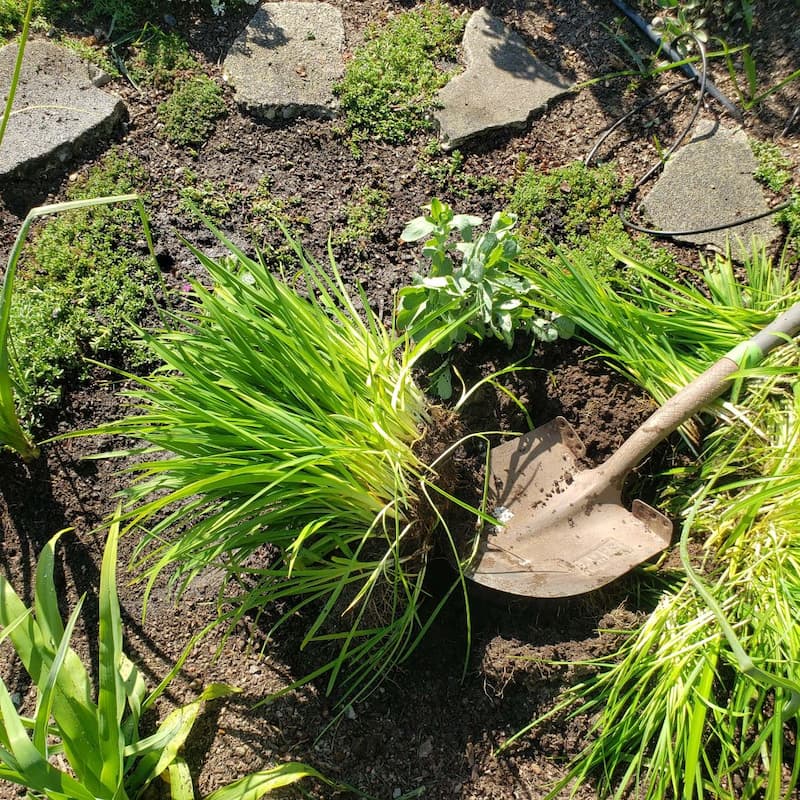
Spring Gardening Tips: Dividing, Splitting and Transplanting
Divide Perennials and Transplant to Other Garden Spaces
Did you know that when you divide perennials in your garden, your plants stay healthy? It can save you money as well.
Early spring is the time to divide and transplant perennials that have outgrown their space. As a rule of thumb, you should divide and move your garden perennials during the season they do not bloom to keep from interrupting their bloom cycle.
Here are some of the many benefits of dividing perennials in your garden.
The best part is that you can transplant the new plants created by splitting the larger, overgrown perennials. I don’t know about you, but I love the idea of free plants coming from my garden each year.

Transplant Evergreen Shrubs in Early Spring
Transplant evergreen shrubs to other areas in the garden in early spring before new growth starts to show. You can also transplant your shrubs in early fall to give the roots time to re-establish before winter.
Moving deciduous shrubs while they are dormant, in spring or fall, brings less stress to the plant.

Split Dahlia Tubers
Splitting your dahlia tubers every spring is an important project for your summer garden.
Dahlias grow from tuberous roots and are easily propagated by digging them up and dividing the roots.
Separating the healthy tubers from those diseased or rotted ones will encourage the plant to produce more blooms and make it healthier in the long run.
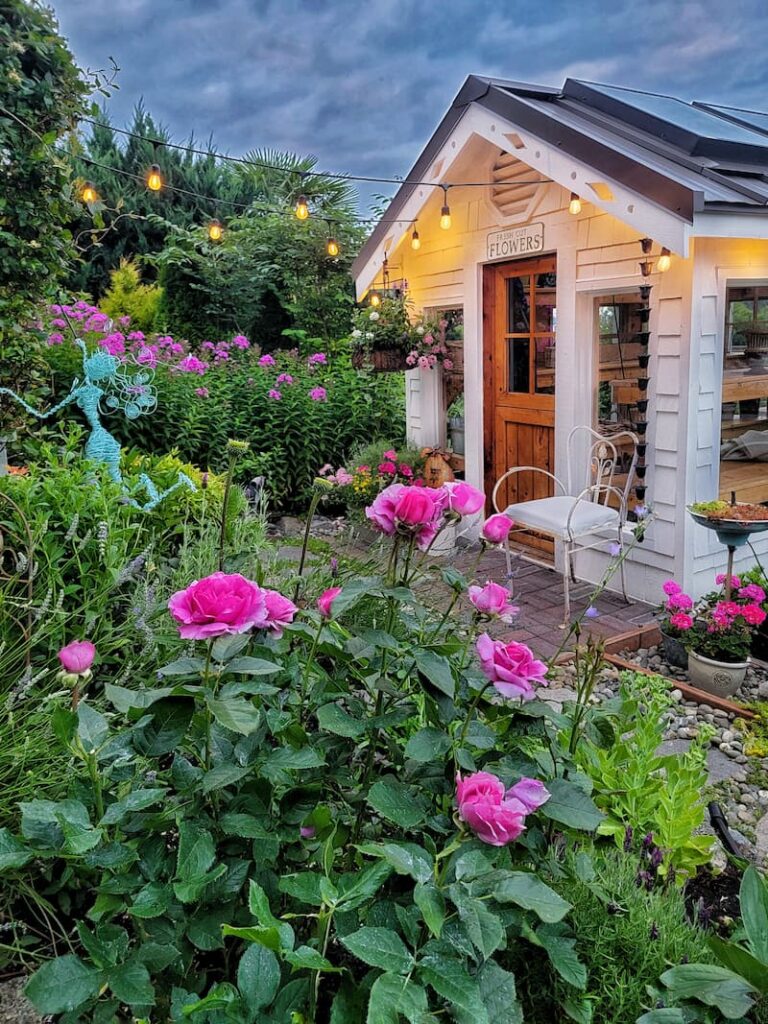
Trimming, Pruning, and Pinching
Pruning and Shaping Plants and Trees
Pruning back winter-damaged branches and spent flowers will encourage plants to focus their energy on growing fresh, strong shoots and abundant blooms.
Shaping trees and shrubs enhances aesthetic appeal, improves air circulation, and increases sunlight penetration. This act helps ward off disease and promotes a fuller, more vibrant display.
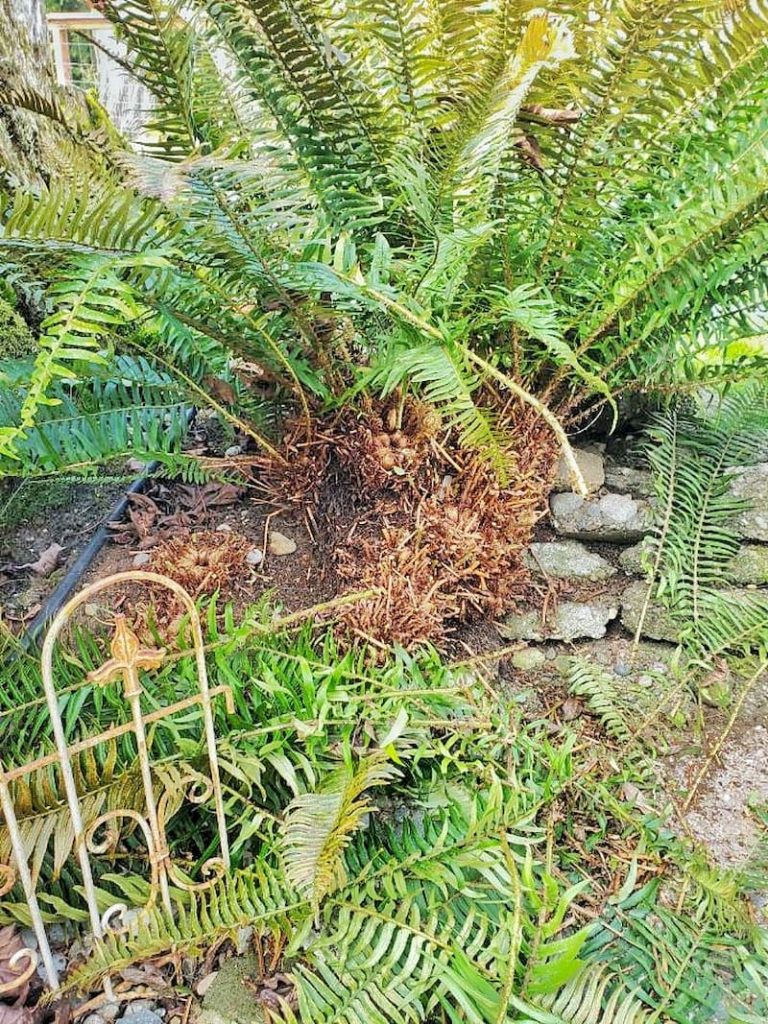
Cut Back Evergreen Outdoor Ferns
Ferns have fronds rather than leaves and last only a year or so. The older fronds start to die back and turn brown while the new ones grow in.
Cutting off the old garden fern growth with sharp, clean pruners or loppers will refresh the plant and leave you only beautiful new fronds.
Trim Ornamental Grasses
As spring signals new growth and rejuvenation in the garden, cutting back your ornamental grasses can help stimulate healthy development.
It’s best to wait until you’re fairly certain the last frost has passed and you can see new growth starting at the base of the plants.
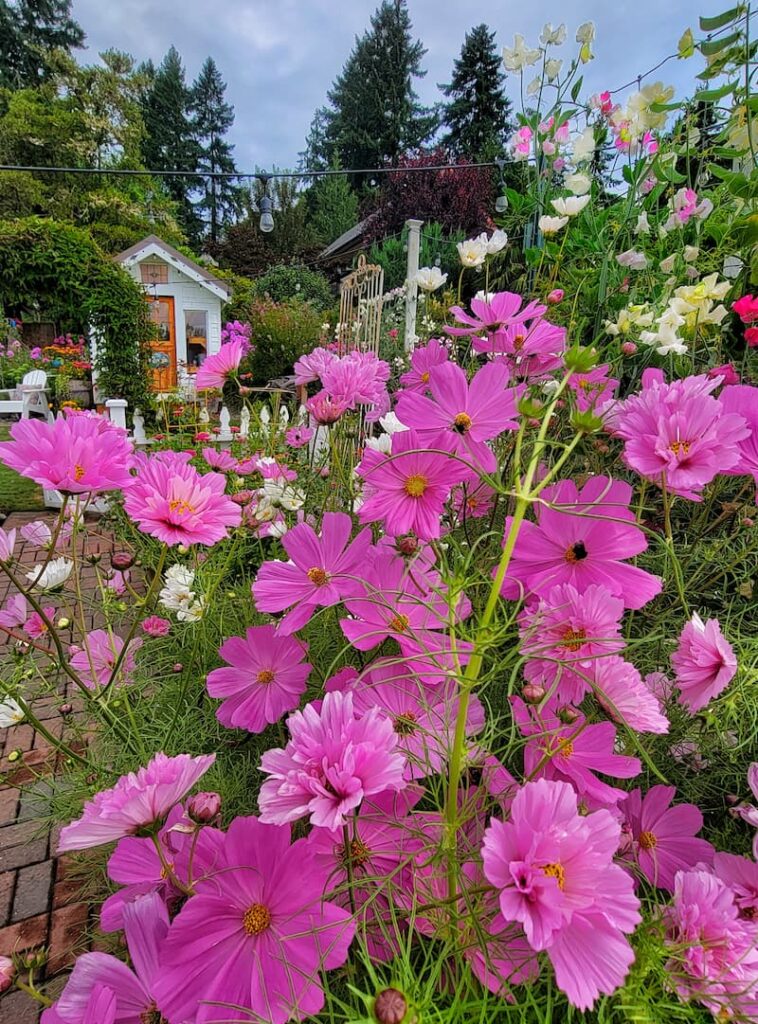
Pinch Back Annual Flowers
The practice of pinching is very important for summer flowering annuals that have a branching form.
Pinching encourages plants to produce more branches near the base, increasing the number of flowering stems per plant and producing longer stems.
By snipping 3-4 inches off the tops of young plants when they are between 8-12 inches tall, you signal the plant to send up multiple stems from below where the cut was made, resulting in more flower production.
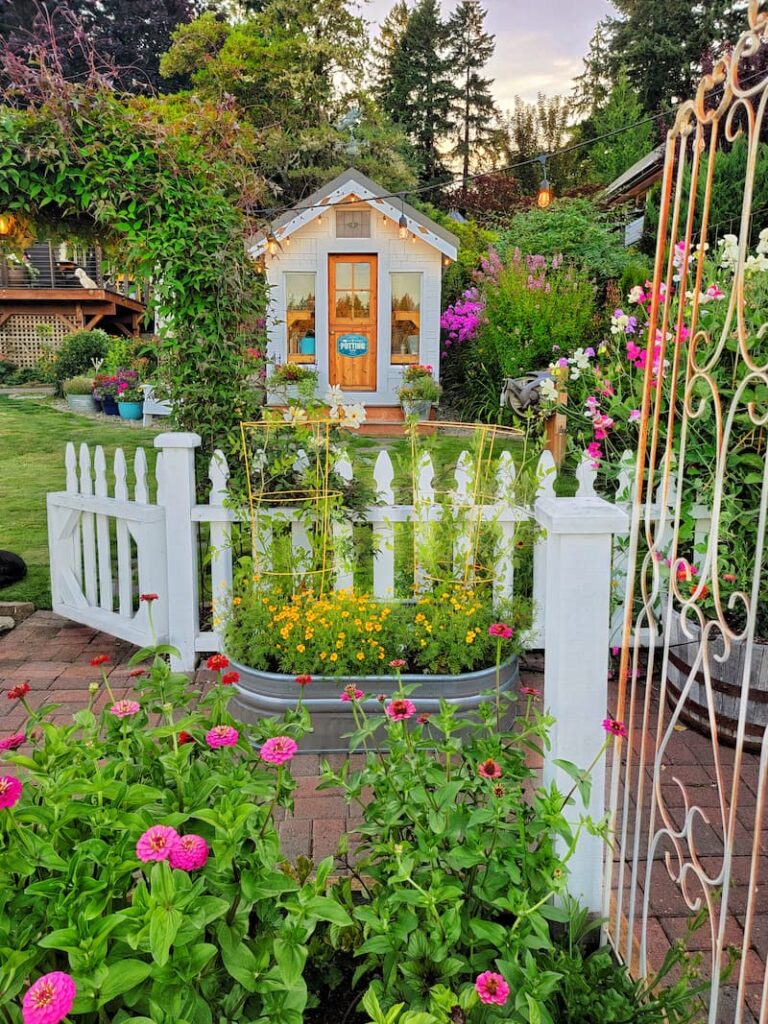
Planting Your Garden
Plan Your Planting
This is where creativity meets strategy.
Planning is one of my favorite things on my spring gardening checklist. Visualizing the season ahead and laying the groundwork for a harmonious garden is exciting!
Consider each plant’s specific needs, such as sunlight, water, and soil preferences, to ensure they coexist in the garden and thrive.
Think about timing. Stagger blooms for a continuous display of color from spring through fall.
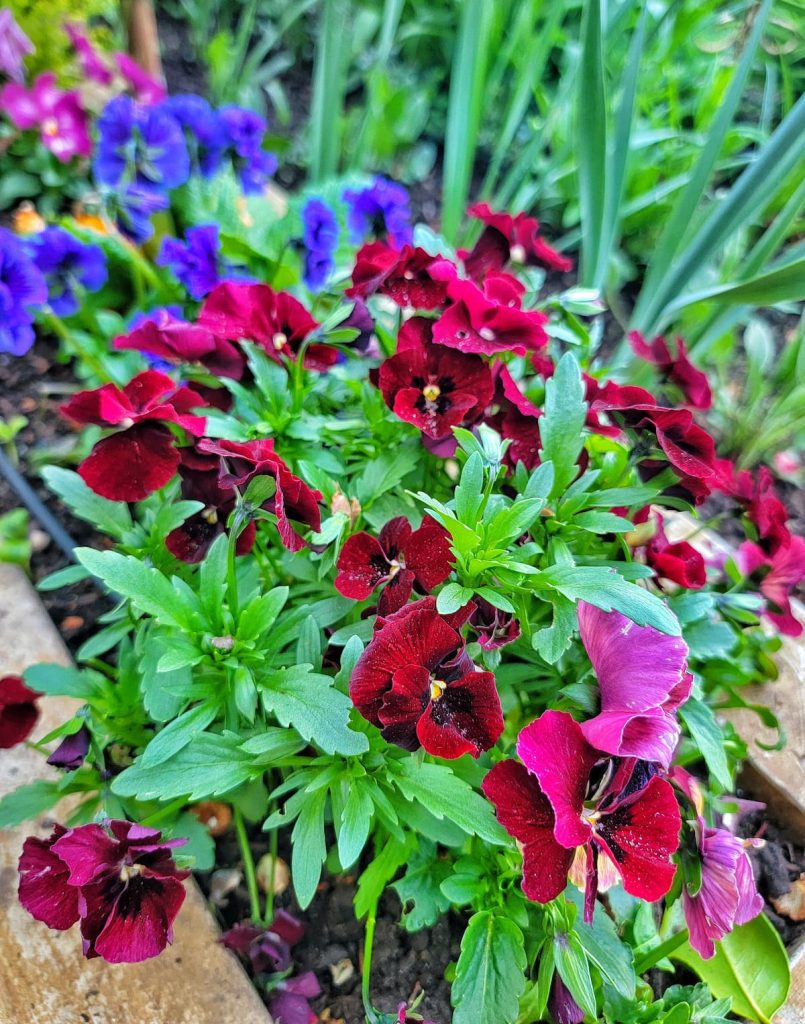
Spring Planting
If there’s still a possibility of frost in your area, think about planting cool-season annuals like primroses, violas, and pansies. Spring garden plants such as petunias, lobelia, and sweet alyssum can also be planted in the garden once there’s no longer a threat of frost.
If you will be vegetable gardening, plant cool-season crops such as leafy greens. Tomato plants are very sensitive to cold temperatures and should be planted in the garden mid-late spring.
Be sure to use crop rotation in your vegetable garden to maintain the health and fertility of the soil and manage pests and diseases. By alternating the types of crops grown in a specific area over many seasons, garnders can naturally enrich the soil, breaking cycles of pests and diseases associated with specific plants.
This method encourages a more sustainable gardening approach, reducing the need for chemical fertilizers and pesticides and leading to a more productive and healthy garden ecosystem.
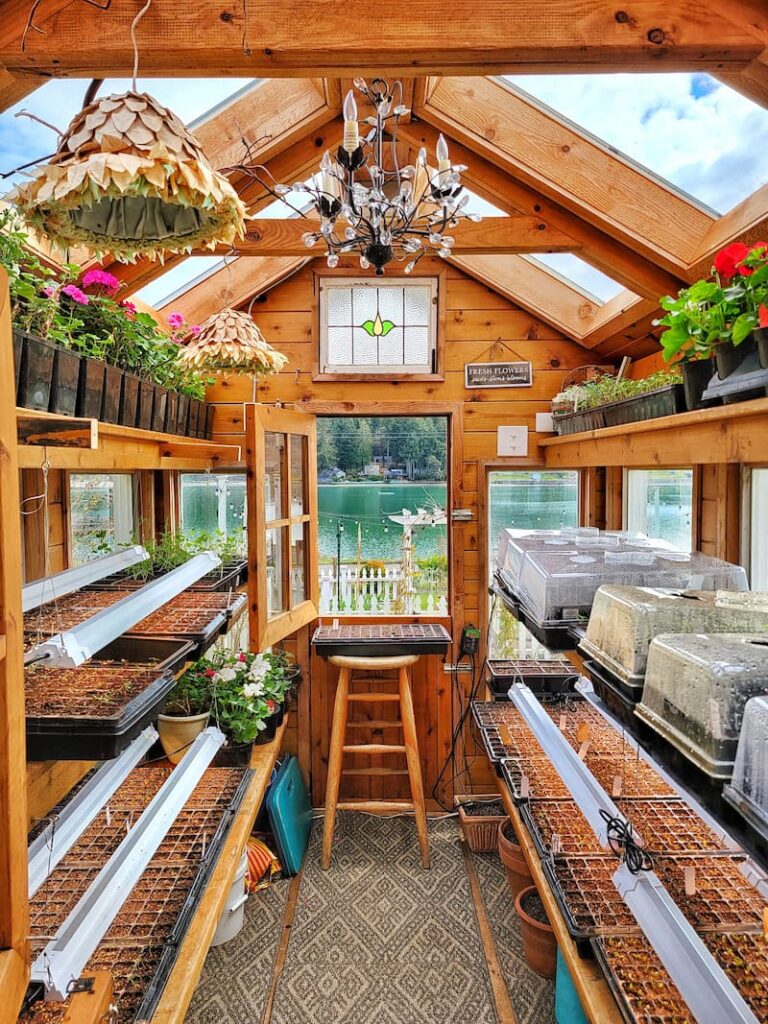
Sow Seeds Indoors
Seed starting is the process of germinating seeds indoors to give plants a head start before they are transplanted outside.
Sowing seeds indoors is beneficial for flowers. It allows gardeners to control the environment and ensure optimal conditions for growth, protecting the delicate seeds from harsh outdoor elements and pests.
Gardeners can begin germination weeks or even months before the last frost date. This is ideal for flowers with a longer maturing period or regions with shorter growing seasons.
‘Growing a Cut Flower Garden’ Series
Learn about the ins and outs of growing a cut flower garden this year. Click the button below to be taken to the entire series of blog posts and choose what is interesting to you.
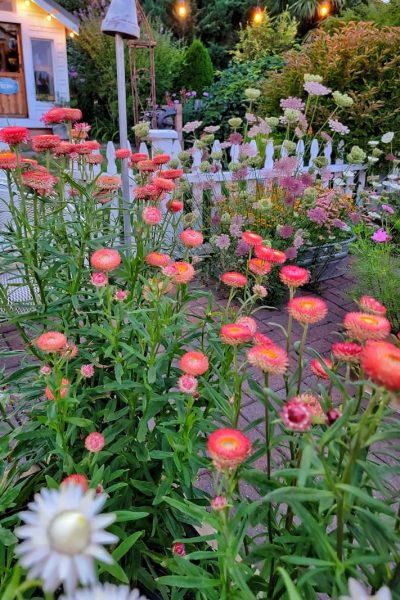
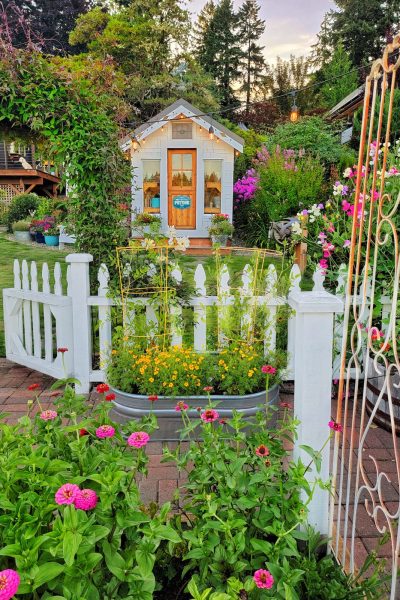
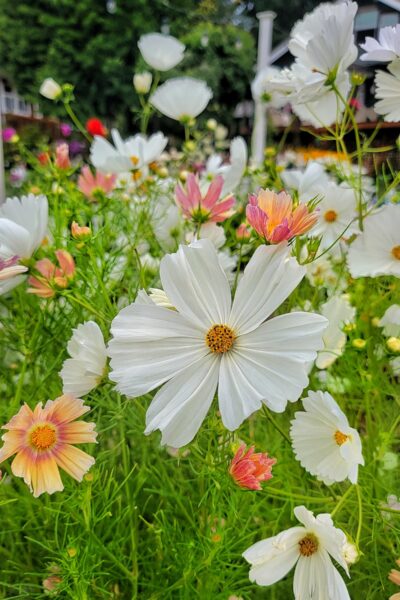
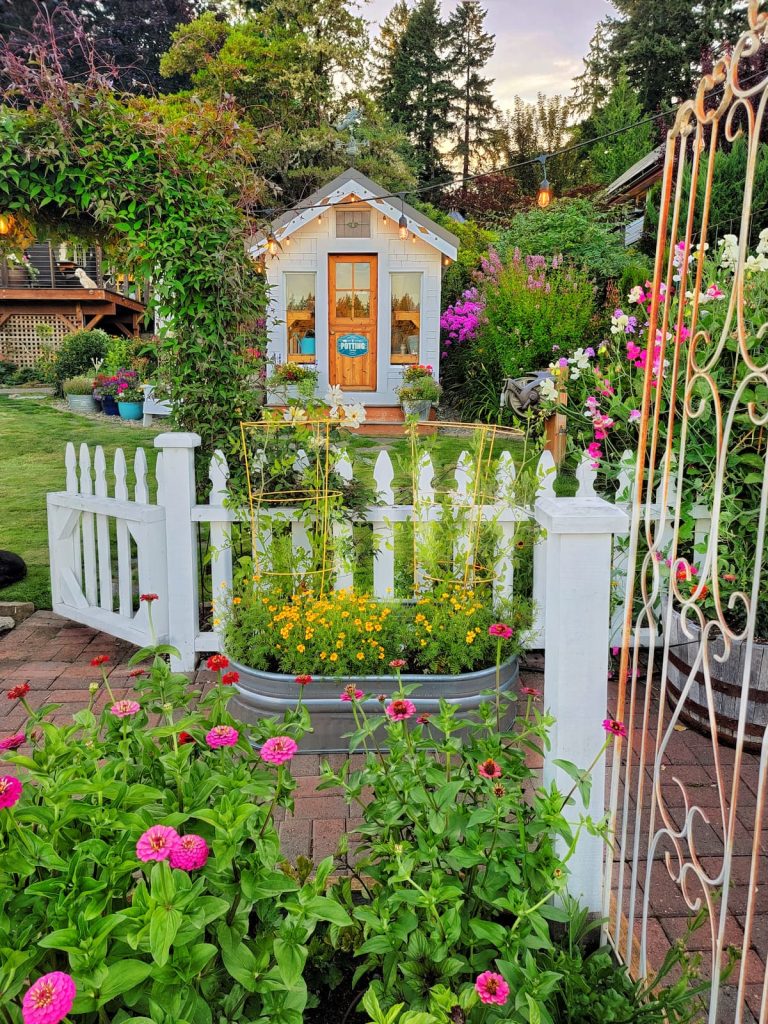
Companion Planting
Remember companion planting, which can enhance plant health and flower production by strategically placing beneficial plants side by side.
It’s not always about which plants you grow when growing a vegetable garden. Being strategic about where you grow your different varieties of plants and which ones you grow together can reward you with better growth and reduced pests.
Companion planting is growing different crops near each other for mutual benefit and keeping others separated so they all thrive.

Spring Gardening Projects to Protect Your Plants
You knew protecting your garden plants would be on my spring gardening checklist, right? Between managing pests and diseases, there is plenty to do!
Pest and Disease Management
Early pest and disease detection is crucial and can prevent small issues from escalating into full-blown infestations or diseases.
Combining preventative measures like healthy soil practices and choosing disease-resistant plant varieties with environmentally friendly solutions, such as natural predators or organic pesticides, ensures your garden remains a vibrant ecosystem.
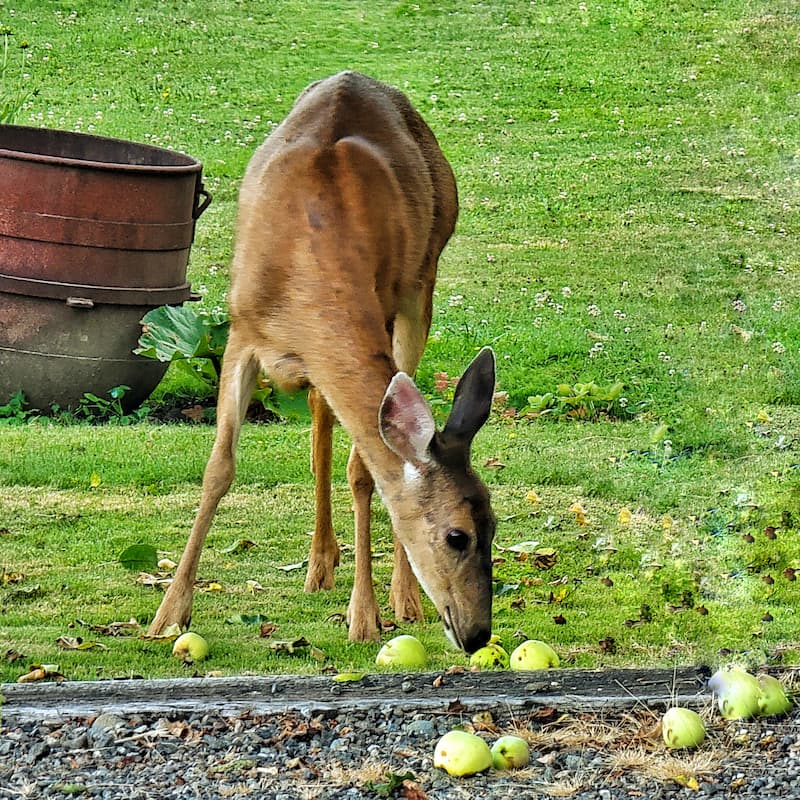
Protect Your Garden from Deer
Deer are just so cute, aren’t they? That is…unless you are a gardener. These animals love to eat certain flowers in the garden, so it’s important to protect plants as soon as they start growing.
I use a deer repellant spray when there is no rain or wind. Motion-activated sprinklers can also help with keeping deer out of the garden.
Unfortunately, this is not just a spring garden project; you must keep up with it throughout the summer and fall.
When creating a garden plan this year, consider planting more deer-resistant plants for a more manageable garden. Here are a few ideas:
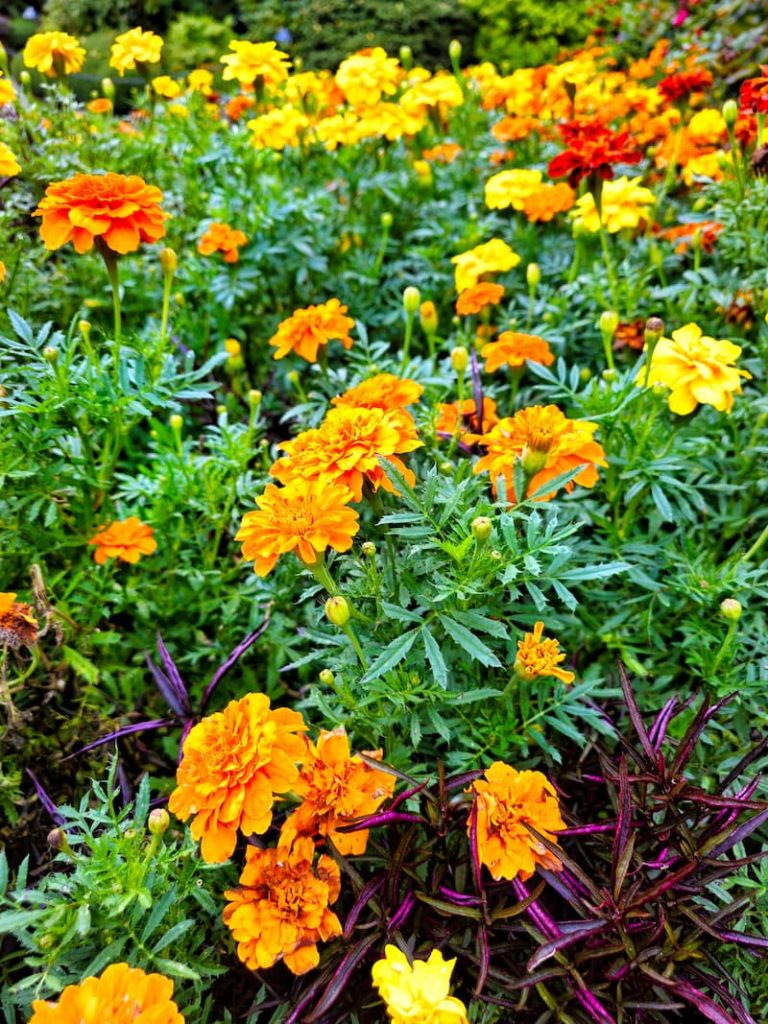
Slug Maintenance
We have many slugs in our rainy Pacific Northwest gardens. They are the sneakiest garden visitors, often leaving a trail of destruction in their wake in the darkness.
Eliminating their hiding places under piles of leaves, dense ground covers, stones, and garden debris is the first step in controlling these slimy nuisances.
Regular garden maintenance, such as clearing plant debris, thinning out thick vegetation, and removing any objects that provide damp shade, can significantly reduce slug populations by exposing them to natural predators and the elements.
The best way to keep snails and slugs from damaging my garden is to regularly sprinkle slug bait around the most susceptible plants, such as dahlias, hostas, marigolds, and zinnias. Organic options, such as Sluggo, often contain iron phosphate, which is effective against slugs and safer for the rest of the garden ecosystem.
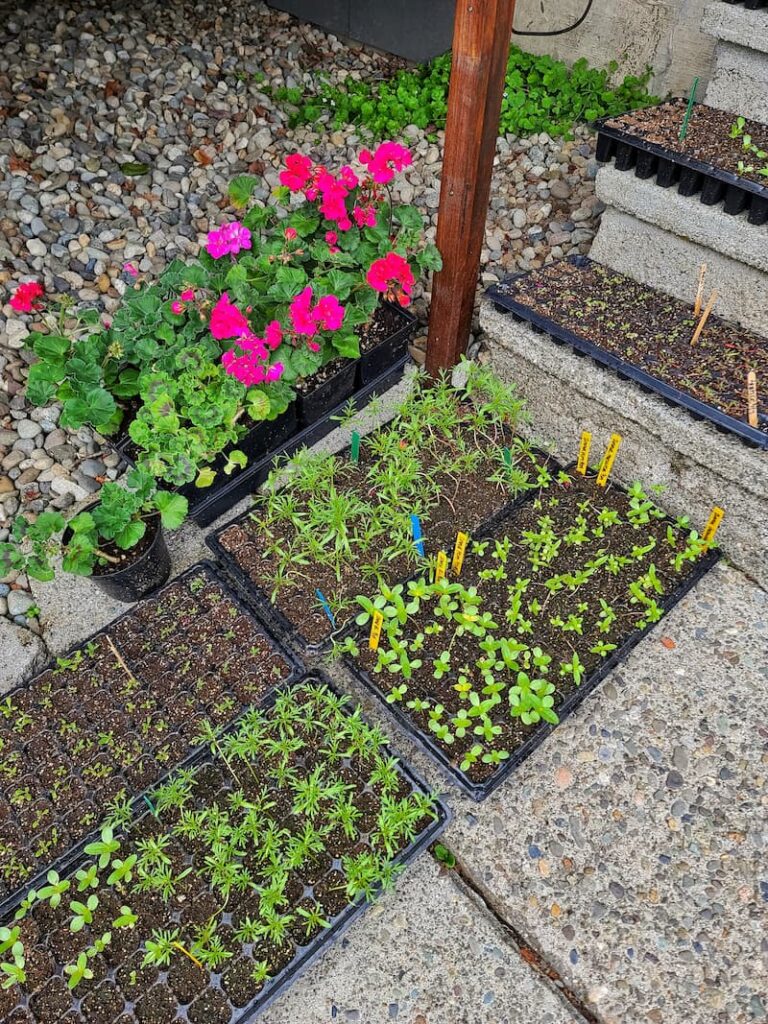
Harden Off Your Flowers Before Transplanting
If you’ve grown seedlings and plants indoors or in a greenhouse or have overwintered plants, they must acclimate to the outdoor conditions before being transplanted to the garden.
This transition period is called hardening off. This is when you gradually expose the plants to outdoor elements such as rain, wind, and a lot of sunlight.
Seed Starting Supplies
Check out my favorite supplies and tools for starting seeds indoors. Whether you’re looking for grow lights or a seed starting mix, you’ll find what I use in my own greenhouse.
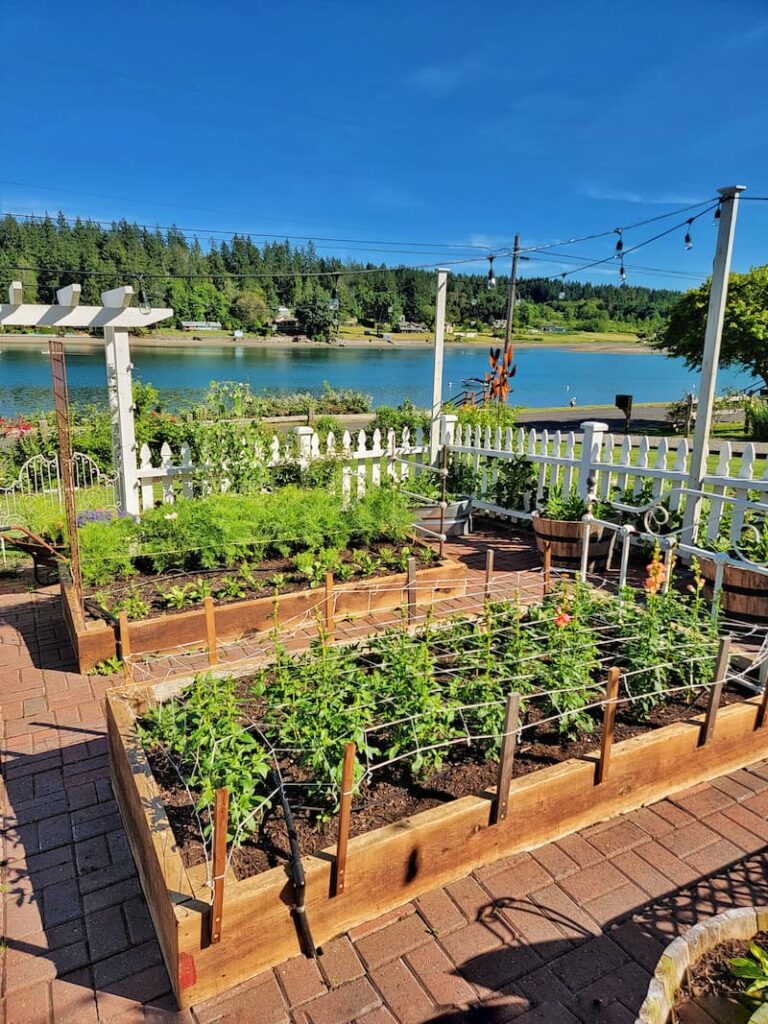
Support Your Flowers
It is crucial in any garden to provide strength and support for your taller and bulkier flowers from the rain, winds, and weight of their blooms. You should set up a support system in your garden beds as you plant summer flowers.
You can choose from a variety of support methods for your plants.
I use trellises for sweet peas, netting for snapdragons, stakes for irises, and the corral method for dahlias. Grow-through supports are perfect for peonies.
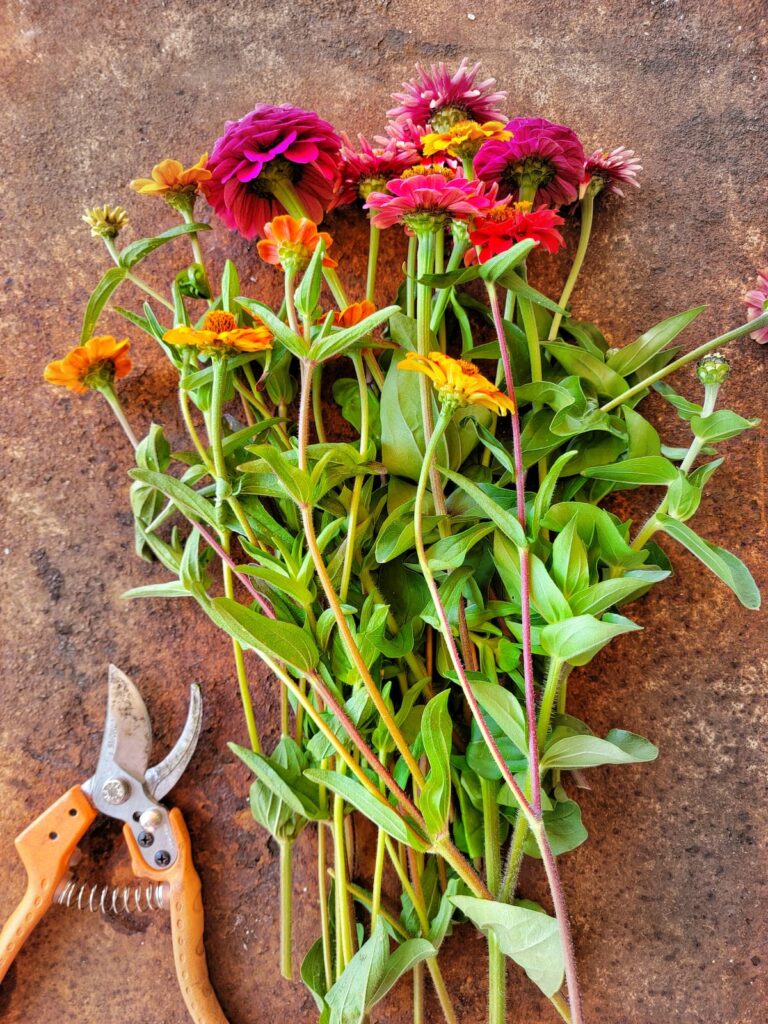
Garden Tool and System Maintenance
Sharp, clean tools make gardening tasks more efficient and promote plant health by making clean cuts that heal quickly, so let’s add that to our spring gardening checklist.
Begin the season by thoroughly cleaning your tools to remove soil and rust. Then, sharpen your gardening shears and pruners to ensure precision in every cut. Don’t forget to oil moving parts to prevent rust and ensure smooth operation.
Double-check your sprinklers and drip irrigation systems to ensure everything functions properly before the dry weather hits.
Be sure times like shade cloth are in good condition and ready for summer’s hot weather. Order any garden supplies before the summer season.
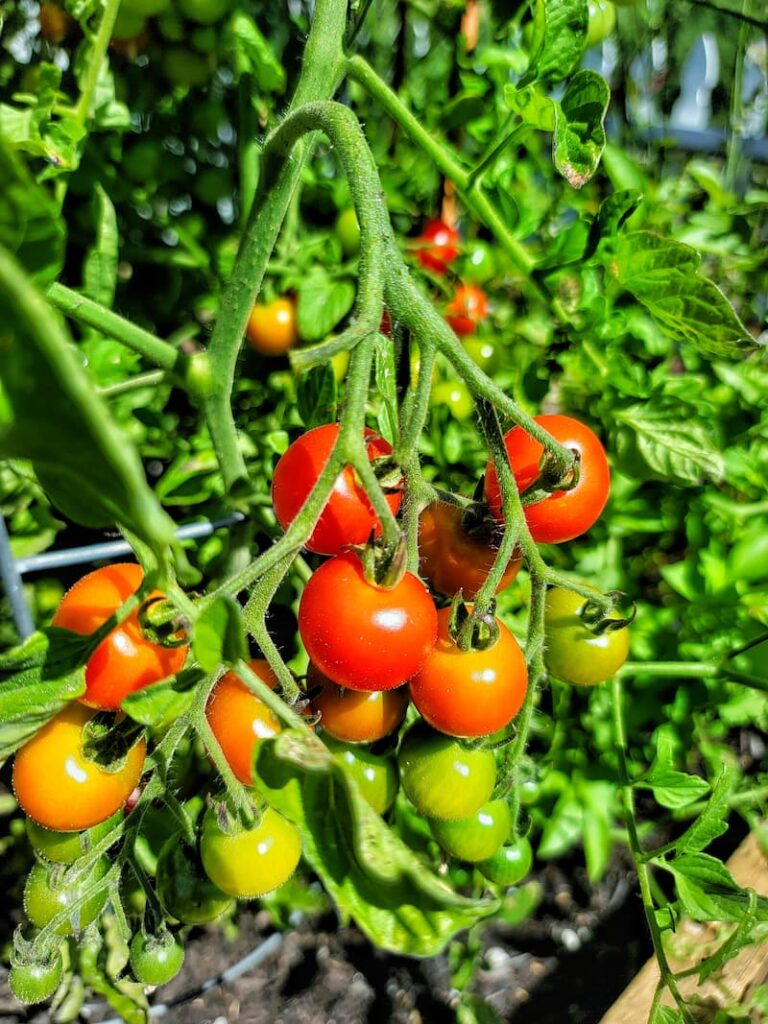
Most Common Questions About a Spring Gardening Checklist
What Month Do You Plant Tomato Plants?
Tomatoes love warm soil and are vulnerable to frost damage, so it’s essential that nighttime temperatures consistently stay above 50°F (10°C) before planting them outdoors. Using a soil thermometer can help you gauge the right planting time.
The best time to plant tomato plants varies depending on your local climate, but a general rule is to wait until after the last frost of spring.
For most gardeners, this typically falls around late April to early May. However, gardeners in warmer regions can start early in February or March, while those in cooler areas might need to wait until late May or early June.
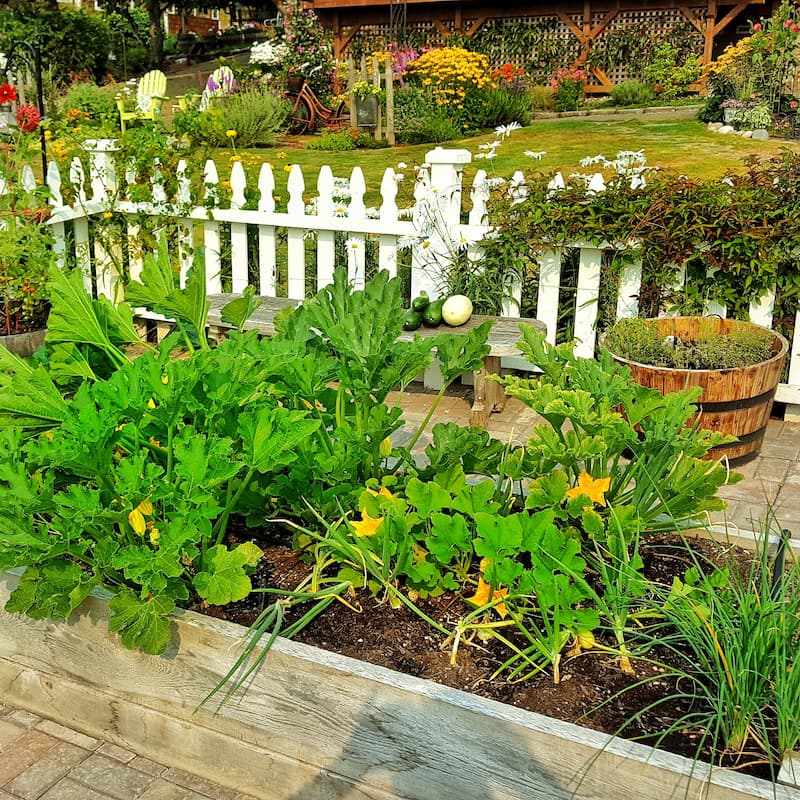
What are the Easiest Vegetables to Grow in Your Garden?
Here are some of the easiest vegetables to cultivate in your garden, making them perfect choices for both novice and experienced gardeners:
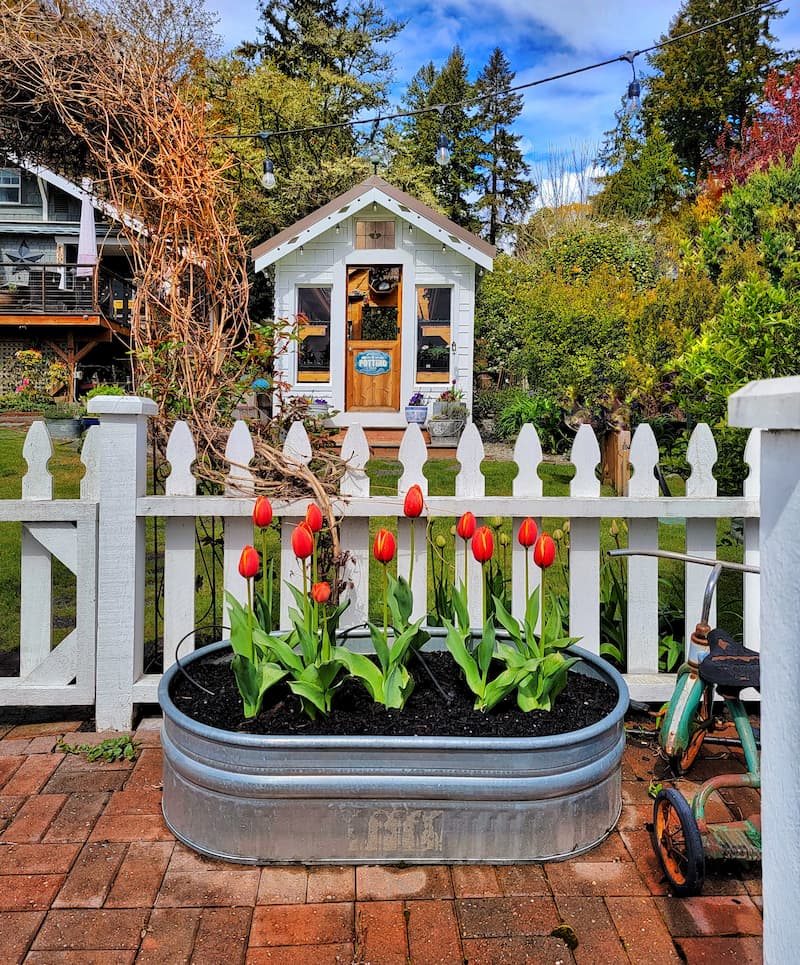
When Should I Start Spring Gardening?
The best time to start spring gardening largely depends on your local climate and the area’s last expected frost date. However, some general guidelines help you kick off your gardening season at the right time.
Check Frost Dates
Your local extension office or online gardening resources can provide your area’s last expected frost date. This date is crucial because planting too early could expose your plants to unexpected frost, causing damage or even killing young plants.
Soil Readiness
Wait until the soil is workable. Soil too wet from winter thaw or spring rains can compact easily when worked, which isn’t good for plant roots.
A simple test is to grab and squeeze a handful of soil; if it crumbles easily, it’s ready. If it forms a mud ball, it’s too wet.
Starting Seeds Indoors
For those in cooler climates, starting seeds indoors can give you a head start on the growing season. This usually begins 6-8 weeks before the last expected frost date. Common early starters include tomatoes, peppers, and eggplants.
Cool-Season Crops
Some vegetables, like peas, spinach, and lettuce, can tolerate cooler soil and air temperatures and can be planted directly in the garden a few weeks before the last frost date.
Warm-Season Crops
Warm-season crops, such as tomatoes, cucumbers, and squash, should be planted after the danger of frost has passed and when the soil has warmed. This is typically a week or two after the last frost date.
Hardening Off Transplants
If you’ve started seeds indoors, it’s important to gradually acclimate them to outdoor conditions, a process known as hardening off. This should start about a week before you plan to plant them outside.
Observing Nature
Nature provides cues for when to start gardening. When you see perennials emerging and trees beginning to bud, it’s a good sign that your garden can start waking up, too.
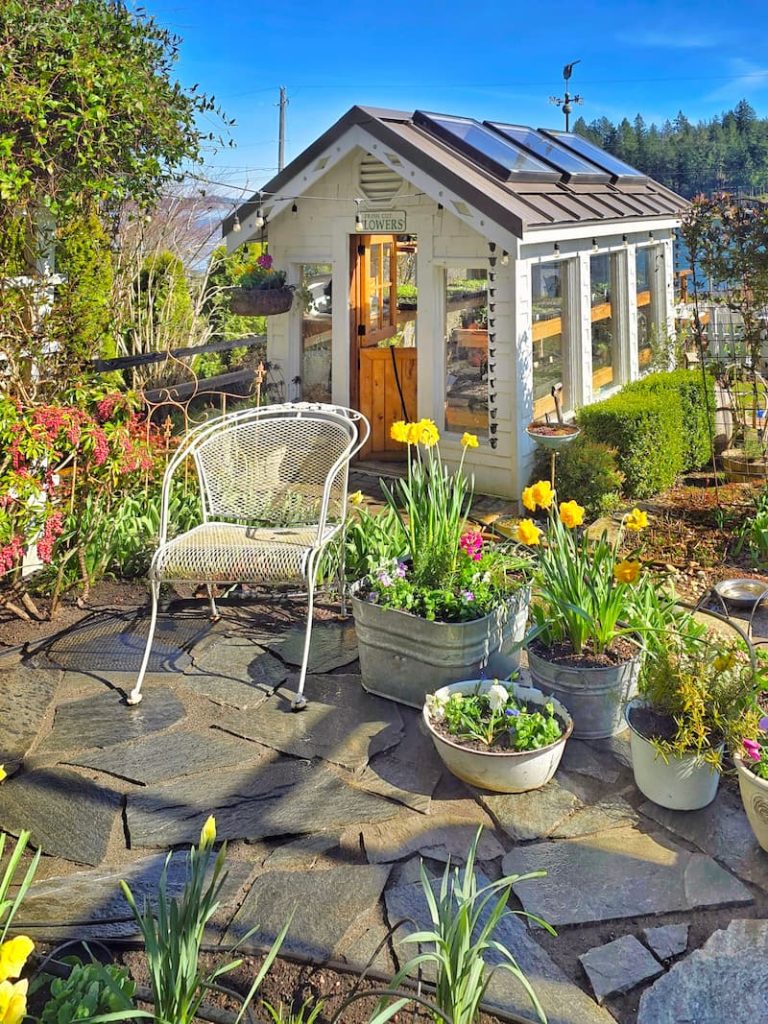
How Often Should I Water My Garden in Spring?
Watering your garden in spring requires a balance that considers the increasing temperatures, the needs of young plants, and the varying rainfall during the season. Here’s how to navigate your garden’s watering needs during this time:
Monitor Soil Moisture
The key is to ensure the soil remains moist but not waterlogged. Feel it a few inches below the surface; if it’s dry, it’s time to water.
Early Morning Watering
Water your garden early in the morning when temperatures are cooler, and the sun is less intense. This timing reduces evaporation and allows water to penetrate deeply into the soil, encouraging deep root growth.
Adjust to Weather Conditions
Spring weather can be unpredictable, with periods of rain and sudden dry spells. Adjust your watering based on the rainfall in your area.
After rain, you can skip watering for a few days, depending on the amount of rain received and the needs of your plants.
Water Deeply and Less Frequently
Deep, infrequent watering is preferable to shallow, frequent watering. This encourages plants to develop deeper root systems, making them more drought-resistant.
Aim for about an inch of water per week, including rainfall, but remember that young seedlings may need more frequent, gentle watering until they are established.
Use Mulch
Applying a layer of organic mulch around your plants can help retain soil moisture, reduce evaporation, and keep the soil temperature stable. Mulch also suppresses weeds that compete with your plants for water.
Know Your Plants’ Needs
Different plants have different water requirements. Vegetables, young plants, and flowering annuals often need more water, especially as temperatures rise towards the end of spring.
Perennials and established plants may require less.
Consider Drip Irrigation or Soaker Hoses
These watering systems deliver water directly to the base of the plant and can be more water-efficient than overhead watering. They also help to keep foliage dry, reducing the risk of some plant diseases.
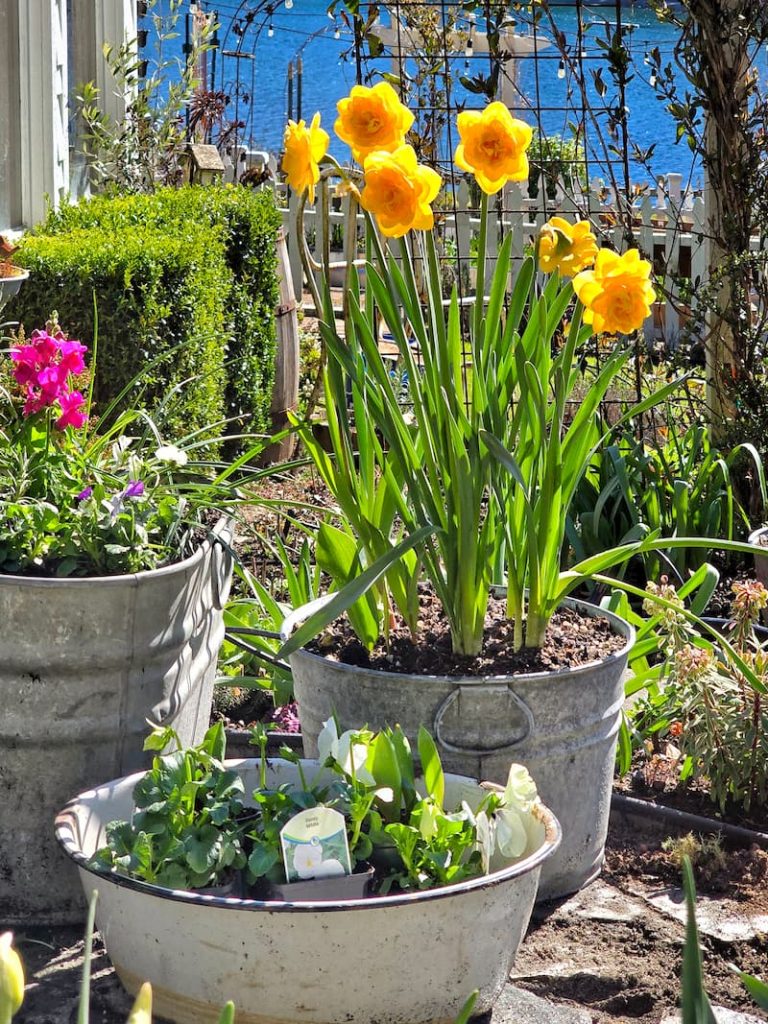
When Should I Plant New Flowers in the Spring?
Planting new flowers in the spring is a fun way to kickstart your garden’s vibrant display for the year. The best timing, however, depends on several factors, including the type of flowers you’re planting and your local climate.
Here are some guidelines to help you determine the optimal planting time:
Know Your Frost Dates
Understanding your area’s last expected frost date is crucial. Frost-sensitive flowers should not be planted outdoors until after this risk has passed.
Your local cooperative extension office or gardening clubs can offer specific dates for your region.
Cool-Season Flowers
Some flowers thrive in cooler temperatures and can be planted in early spring, sometimes before the last frost.
Examples include pansies, snapdragons, and some varieties of violas and primroses. These can often tolerate a light frost and are ideal for brightening your garden in early spring.
Warm-Season Flowers
Marigolds, petunias, and zinnias need warmer soil and air temperatures to grow. These should be planted after the danger of frost has passed and the soil has warmed up, usually a couple of weeks after the last expected frost.
Check Soil Temperature
Some flowers require specific soil temperatures for optimal growth. A soil thermometer can help you decide when to plant. Generally, waiting until the soil is consistently above 60°F (15°C) in the morning is a good practice for warm-season flowers.
Starting Indoors
Consider starting seeds indoors 6-8 weeks before the last expected frost date for a head start on the growing season. This method is particularly useful for flowers with a longer growing season.
Once the weather warms and the plants are hardened off, they can be transplanted outdoors.
Observe Nature’s Cues
Nature often provides signals about the changing seasons. When you see local trees budding or perennial plants starting to grow, it’s often a sign that it’s safe to begin planting spring flowers.
Adapt to Local Conditions
Microclimates can significantly affect planting times. Sunny, sheltered spots may be suitable for planting a bit earlier, while colder, exposed areas might require waiting a little longer.
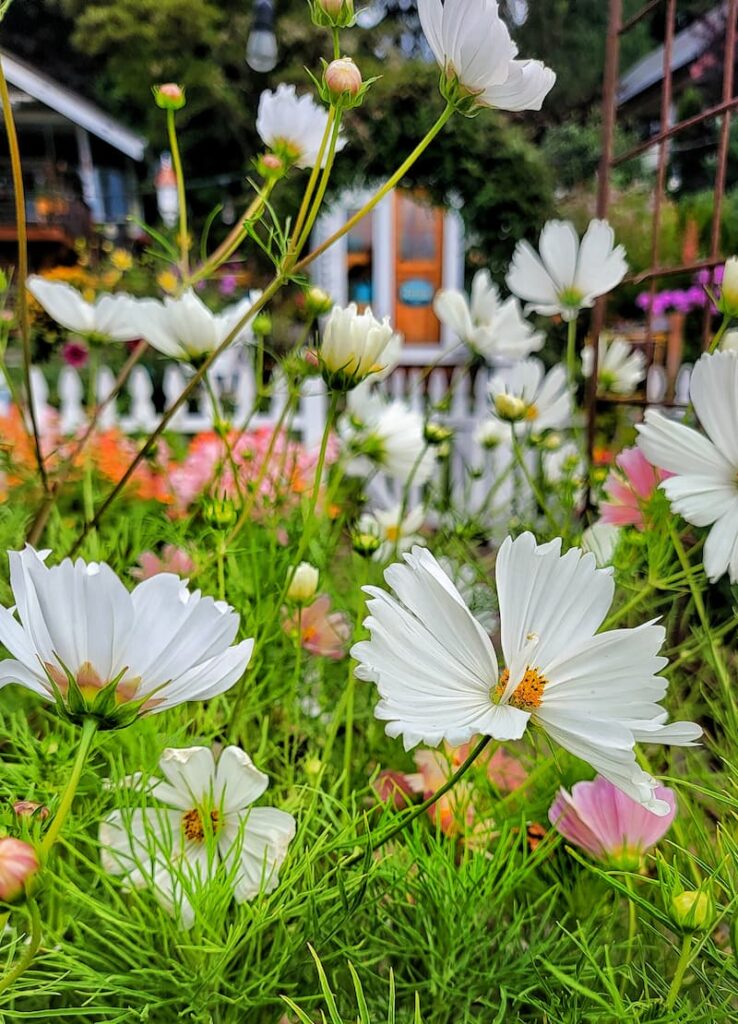
As we wrap up our spring gardening checklist, it’s clear that each task, from assessing your garden to maintaining your tools, is a step towards creating a vibrant, flourishing outdoor space.
Spring gardening is more than just a list of chores. It’s a labor of love and an investment in your garden’s future beauty and production.
Remember, gardening is a journey, not a destination. It’s about observing, learning, and growing alongside your plants. So, take a moment to appreciate the work you’ve put in and look forward to the lush, blooming days ahead.
If you have any questions or additional suggestions, please share them in the comments below. And be sure to share this blog post link with anyone who may find these gardening tips useful.
Until next time,
Happy Spring Gardening!

I’m a self-taught hobby gardener. Everything I share on my blog is my opinion and what worked for me.
Follow Me for More Inspiration
Shop my Amazon Storefront, LTK sources, and favorite home decor, garden, and lifestyle products. When you purchase from one of my links, I earn a small commission, which helps me continue sharing all the content you expect on my blog.
Be sure to follow me on Pinterest, Instagram, Facebook, TikTok and LIKEtoKNOW.it. Do you like gardening? Join my Facebook Gardening Tips & Tricks group.

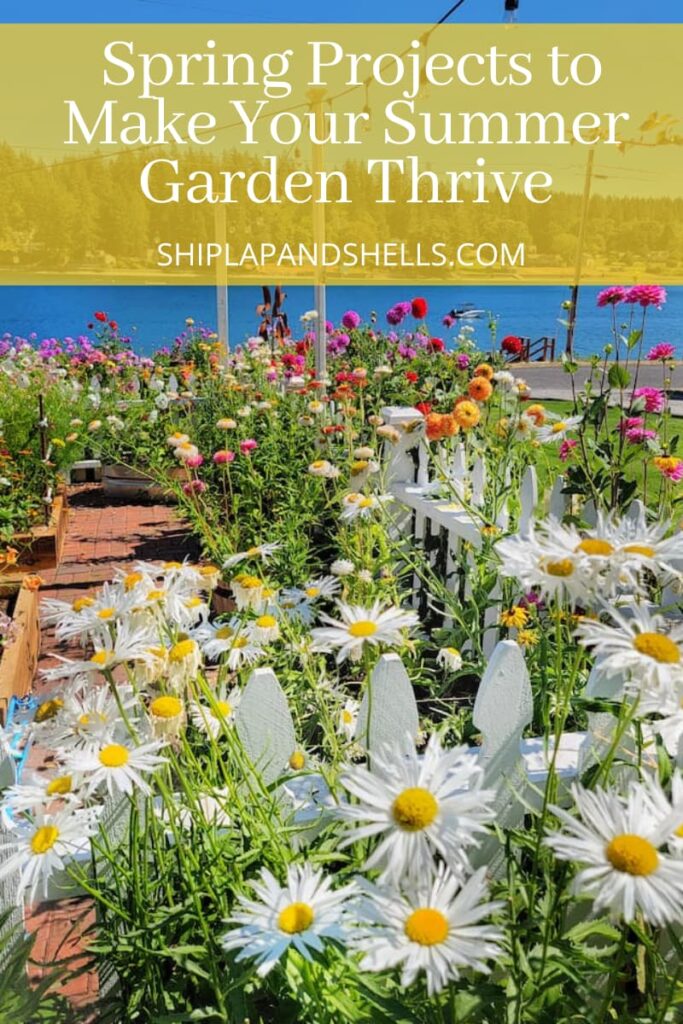


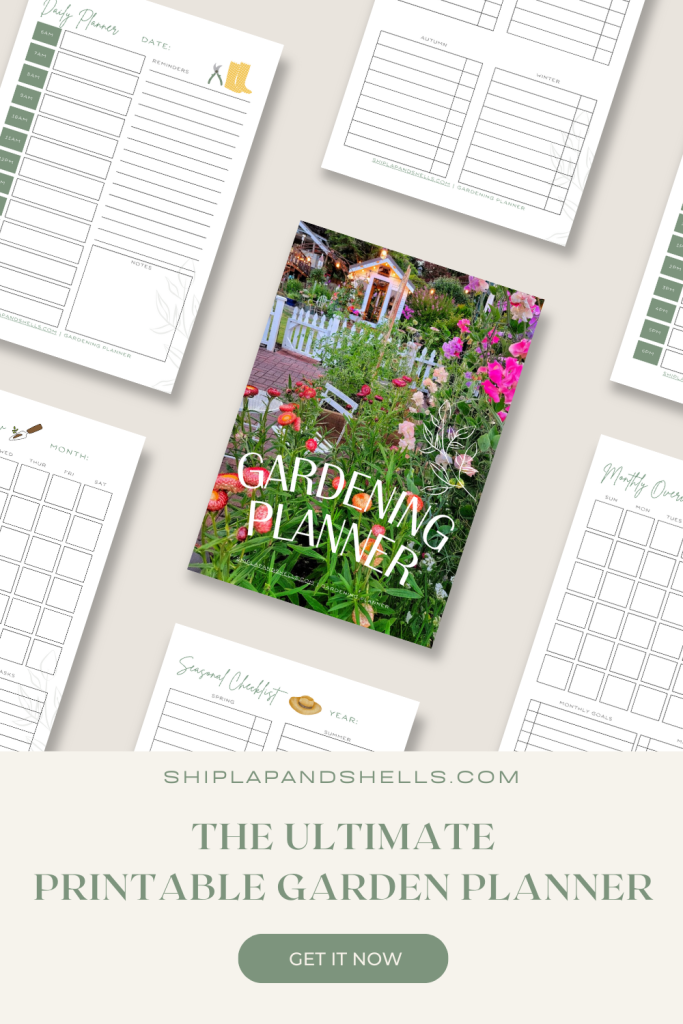
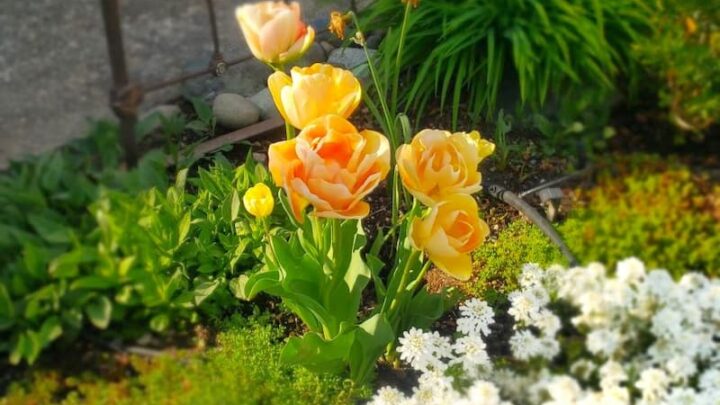
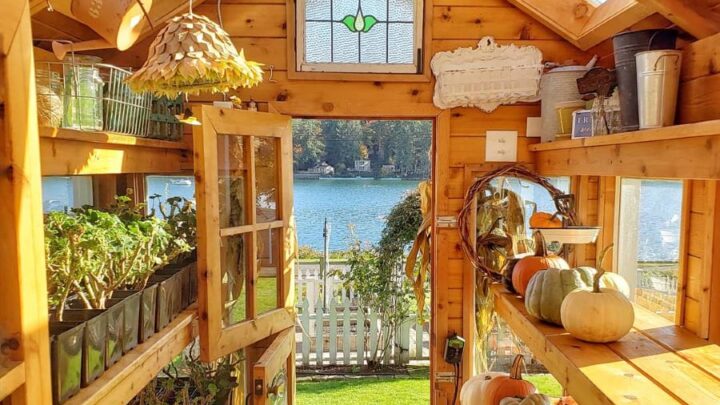
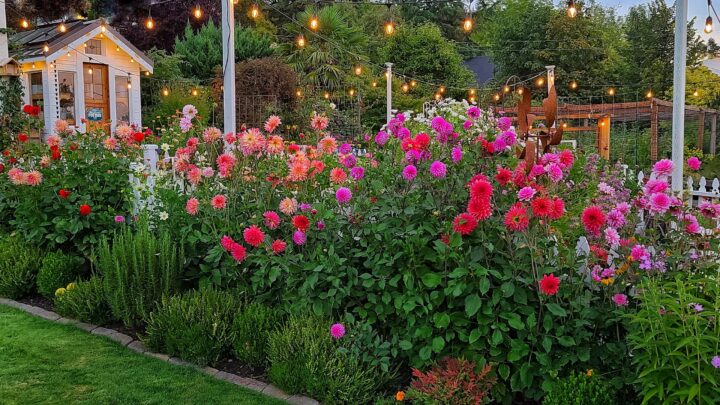
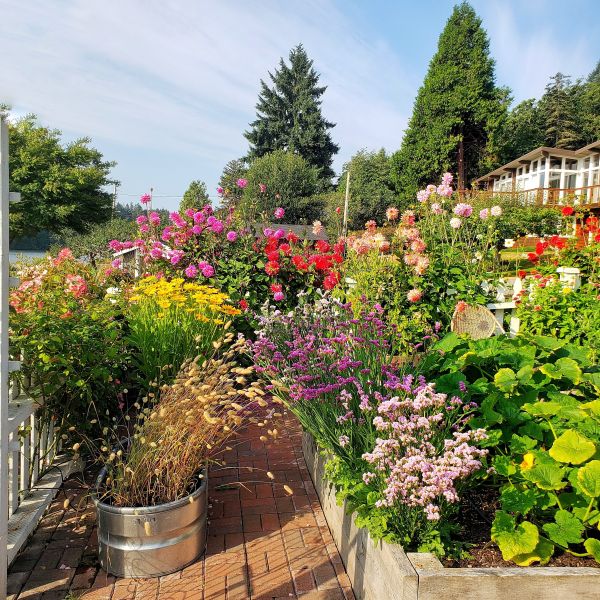

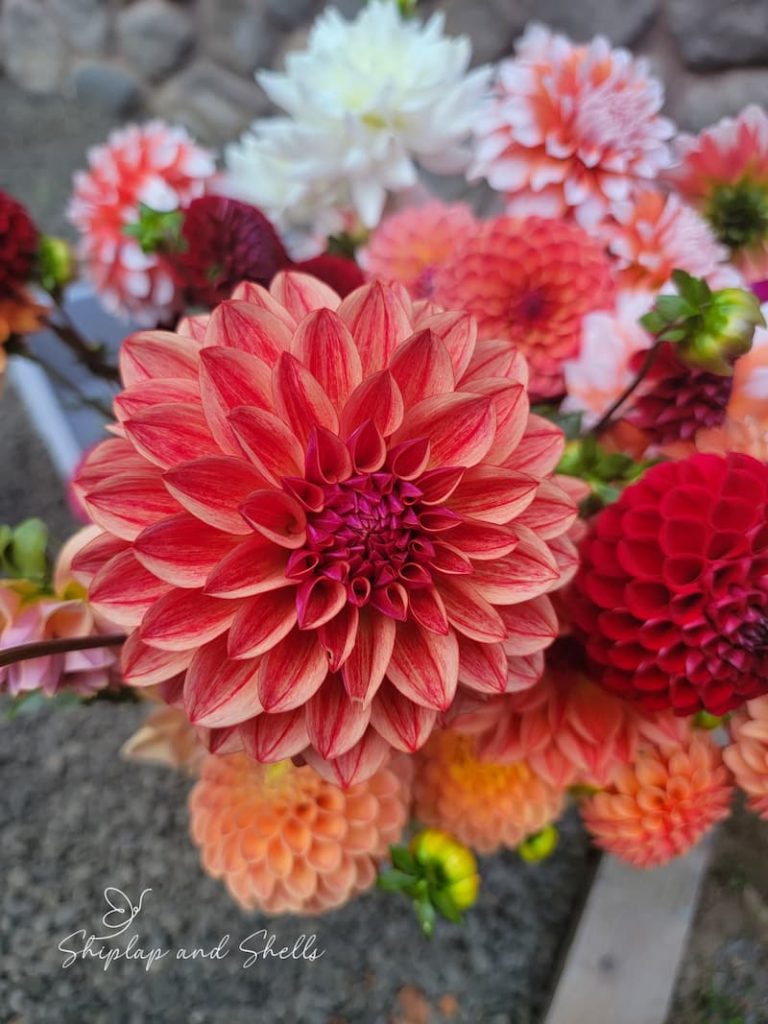
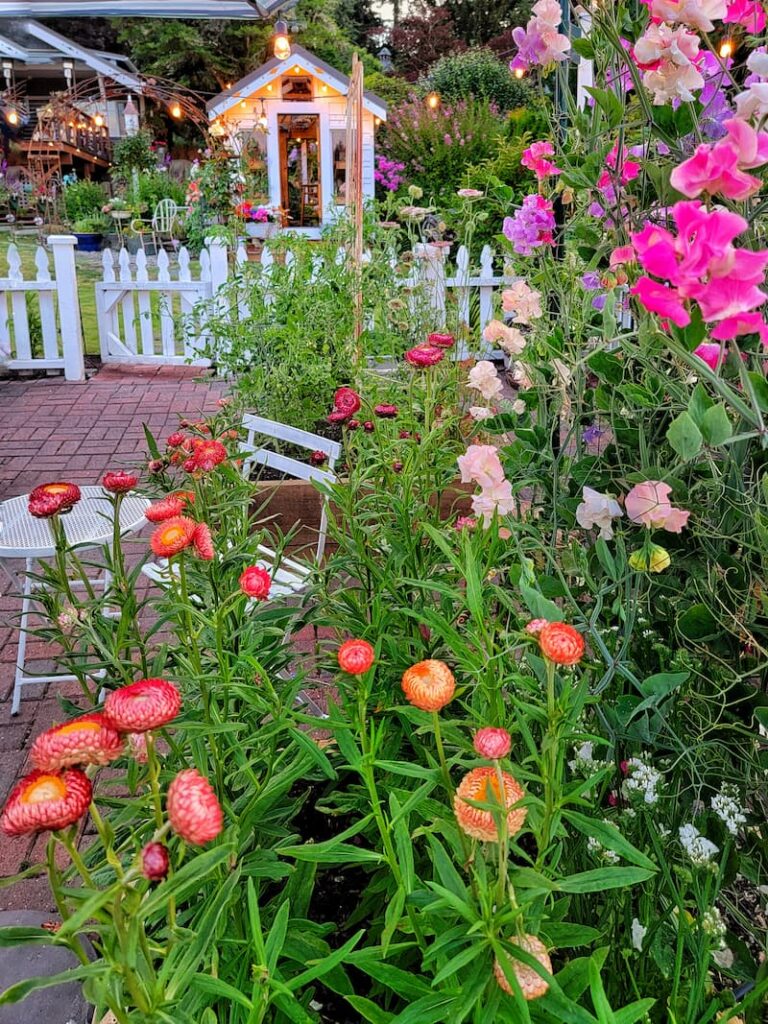
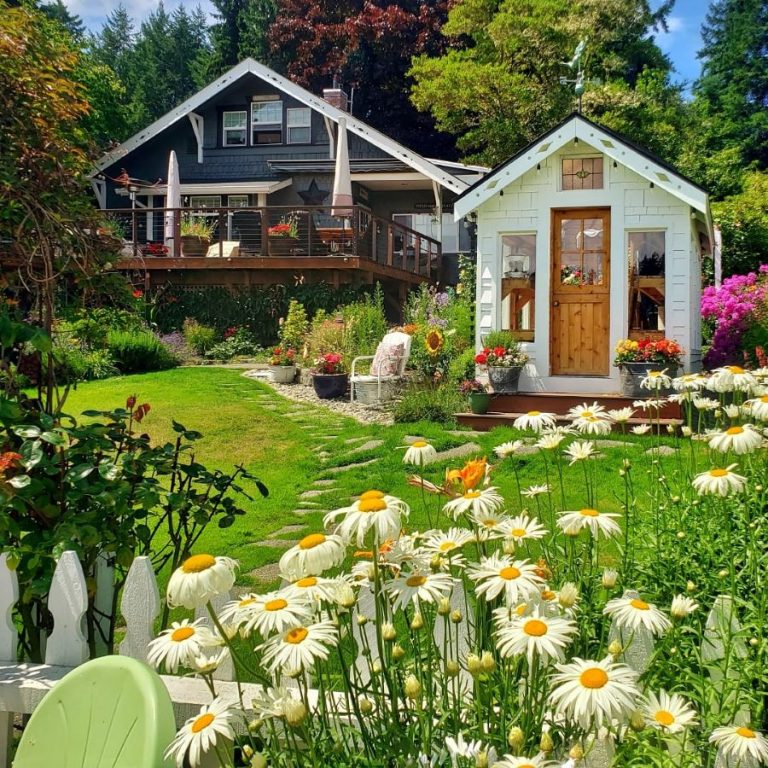
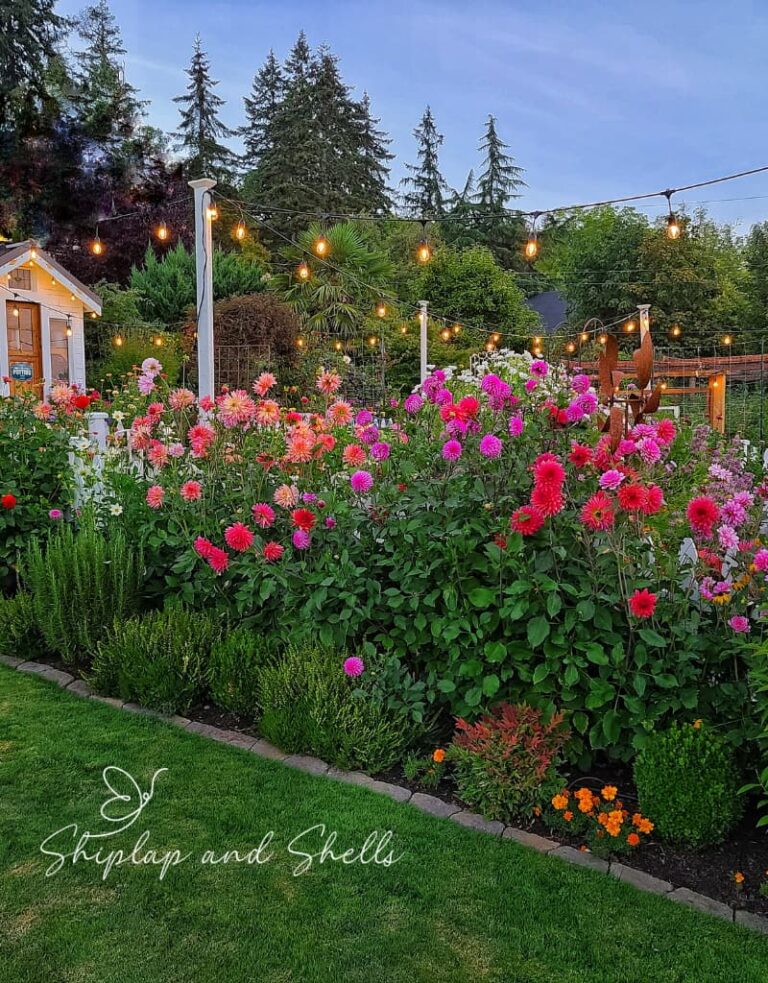
When you say pinch back the sweet peas, do you mean all the way back to the dirt? I’ve got two flats of them inside still and they are growing great
Hi Donnalynn! When the sweet pea seedlings grow 4-6 inches tall is when you can snip the tops off just above the leaf nodes. Leave 2-3 sets of leaves on the seedlings. Hope that answered your questions. I’m sharing a story on Instagram which I’ll highlight.
Loving all the garden photos! Great tips for spring!!!